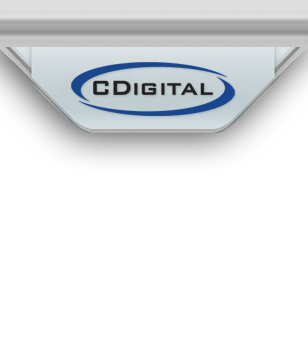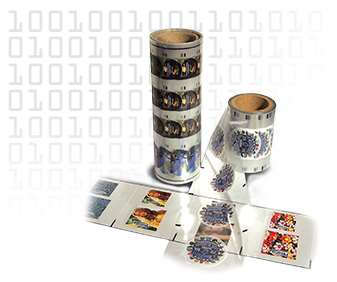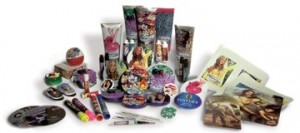 Manufacturers and ad specialty companies have two key criteria when it comes to choosing a method – screen print, gravure, or digital – for plastics decorating. 1) The end result has to be high quality and aesthetically pleasing. If a product is not appealing, it will not sell. It is that simple. 2) These companies also need to turn a profit. That is why they are in business, after all. These companies require short run decorating solutions that allow them to produce items on demand. The solution: Digital Heat Transfers.
Manufacturers and ad specialty companies have two key criteria when it comes to choosing a method – screen print, gravure, or digital – for plastics decorating. 1) The end result has to be high quality and aesthetically pleasing. If a product is not appealing, it will not sell. It is that simple. 2) These companies also need to turn a profit. That is why they are in business, after all. These companies require short run decorating solutions that allow them to produce items on demand. The solution: Digital Heat Transfers.
Digital heat transfers are one of the most popular methods for decorating plastics and the only digital solution for decorating glass.
Why Go Digital?
Of the nearly 10,000 printing lines worldwide, 20% have already converted to digital and 50% are expected to convert by next year. The digital revolution can be explained by looking at three key areas: finance, operations and marketing.
- Finance: As we have already alluded, digital heat transfers offer improved flexibility and efficiency, which, in turn, allows for short run decorating.
- Operations: Digital heat transfer do not require any dry time, allowing for increased throughput. And when you need to swap out an image, changeover is done in seconds. Hello, increased productivity!
- Marketing: Digital offers marketers virtually limitless capabilities, customization, and personalization, allowing more focused product decoration.
Click Here to learn more about the benefits of digital heat transfers!
Digital Heat Transfers and Plastics Decorating: The Process
It all starts with the transfer design. The client sends their artwork electronically where it can be tweaked if necessary, before being sent to a high speed digital printer. The images are printed on polyester film; appropriate adhesive is applied depending on the product substrate (in this case plastics); and the film is cut, rolled, and prepared to be shipped to the client.
Customer receives a transfer film roll and loads the printed roll onto a heat transfer machine. The process for applying heat transfers to plastics requires three things: pressure, high temperature, and dwell time. The operator sets the machine at specific parameters for the blank part and loads the part onto a nesting fixture to allow a heated silicone decorating head to apply heat and pressure to the part transferring the printed image from the film onto the blank part.
Parts are dry and ready to be shipped right after application (except glass and ceramic which requires a post bake)
If you have any questions about Digital Heat Transfers and Plastics Decorating, please contact Grafixx at 410-646-7800 or fill out our Contact Form. You can also follow us on Facebook, Twitter, Google+, Pinterest, and YouTube.


